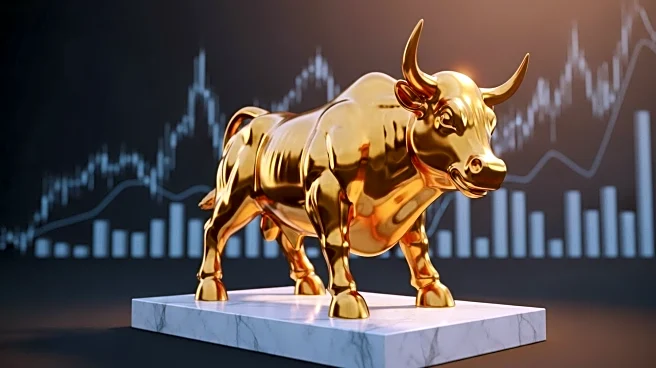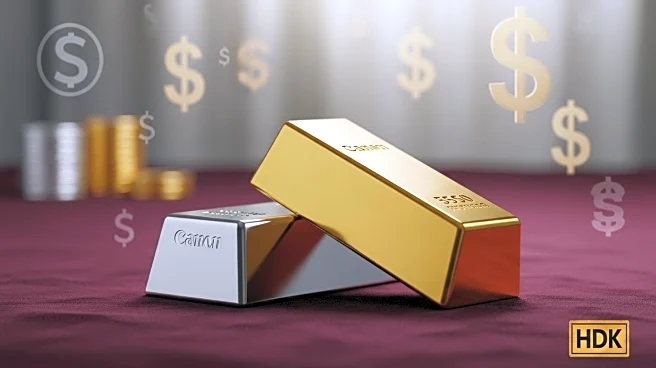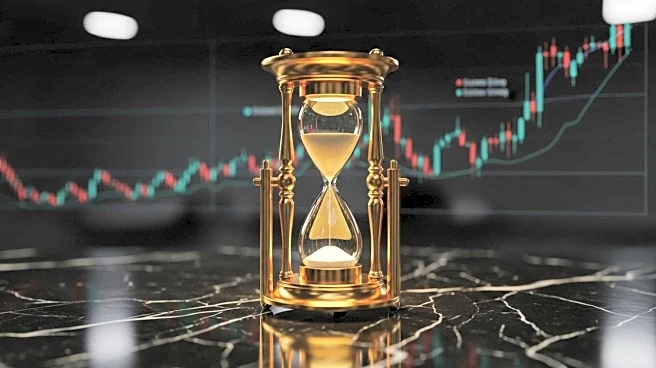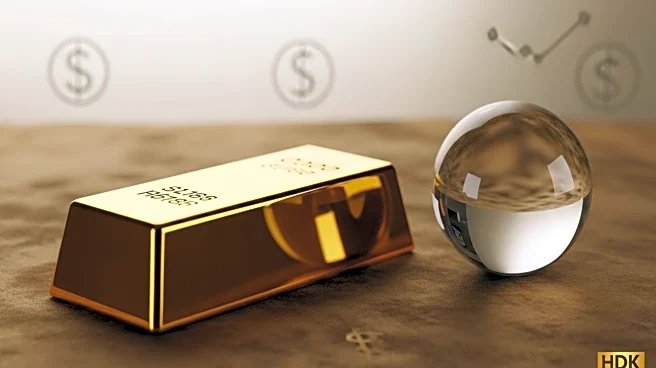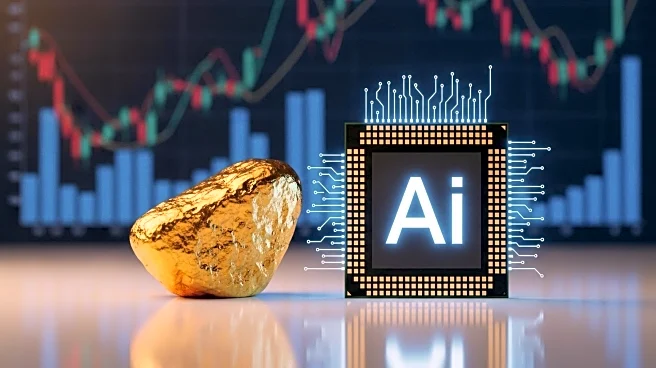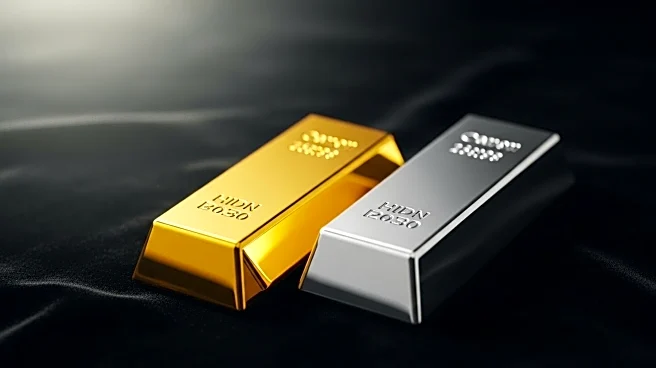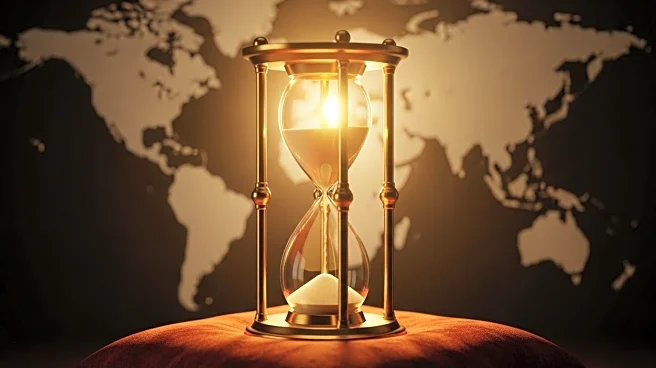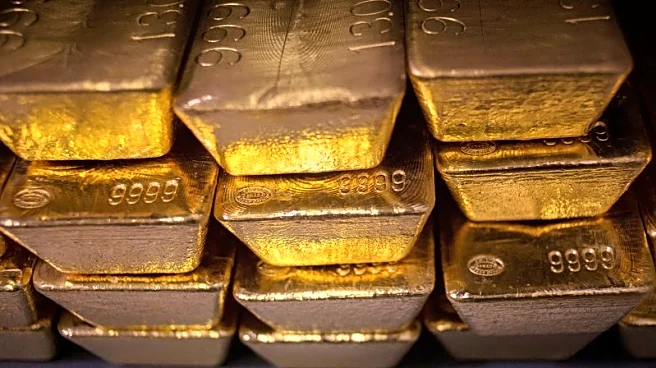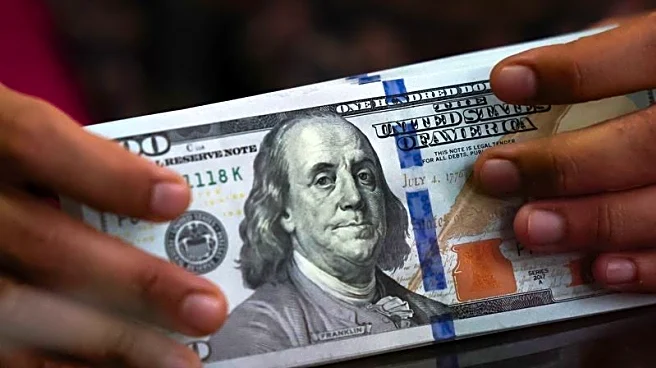What's Happening?
Gold prices have surged to approximately $3,884 per ounce, nearing historic highs just below $3,896, marking a seventh consecutive weekly gain. This increase represents a 47% rise year-to-date, driven by a broad safe-haven rally. Silver has also reached a 14-year peak, trading at $47 per ounce, up 63% this year. The rise in precious metals is attributed to a combination of factors, including a U.S. government shutdown, geopolitical tensions, and expectations of Federal Reserve rate cuts. The shutdown has halted economic data releases, putting pressure on the U.S. dollar and increasing the appeal of non-yielding assets like gold. Additionally, ongoing conflicts in Ukraine and the Middle East, along with political uncertainties in Washington, have further fueled safe-haven buying.
Why It's Important?
The surge in gold and other precious metals highlights a significant shift in investor sentiment towards safe-haven assets amid economic and geopolitical uncertainties. The potential for Federal Reserve rate cuts, coupled with a weakening U.S. dollar, enhances the attractiveness of gold as a store of value. This trend could have broad implications for financial markets, influencing investment strategies and portfolio allocations. Central banks' continued stockpiling of gold underscores a strategic move away from reliance on the U.S. dollar, reflecting broader concerns about global economic stability. The rise in precious metals also impacts industries reliant on these commodities, such as electronics and automotive sectors, which may face increased costs due to higher material prices.
What's Next?
Analysts predict that gold could surpass the $4,000 mark in the coming months if current economic and geopolitical conditions persist. The Federal Reserve's upcoming decisions on interest rates will be closely watched, as further rate cuts could drive additional investment into gold. Meanwhile, geopolitical developments, particularly in Ukraine and the Middle East, will continue to influence market dynamics. Investors and central banks are likely to maintain their focus on precious metals as a hedge against ongoing uncertainties. The mining industry may see increased exploration and production efforts to capitalize on high prices, although regulatory and environmental challenges could pose obstacles.
Beyond the Headlines
The current rally in precious metals may signal a longer-term shift in global financial strategies, with increased emphasis on diversification away from traditional fiat currencies. This trend could lead to a reevaluation of monetary policies and reserve management by central banks worldwide. Additionally, the heightened demand for gold and silver may spur innovation in recycling and alternative sourcing methods to address supply constraints. The interplay between economic policies, geopolitical tensions, and market responses will likely shape the future landscape of precious metals investment.

